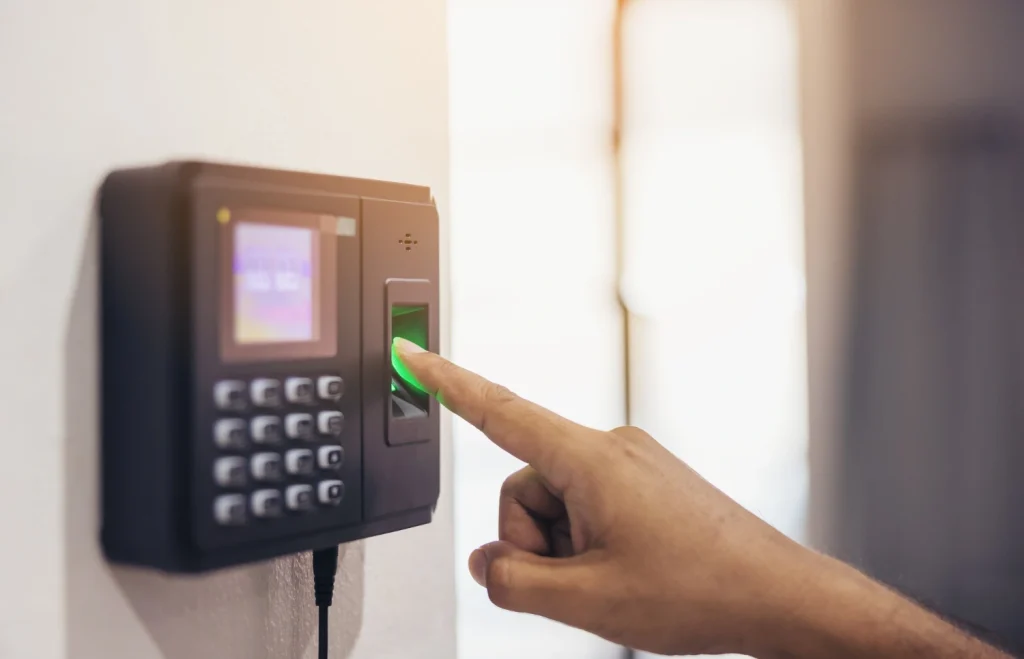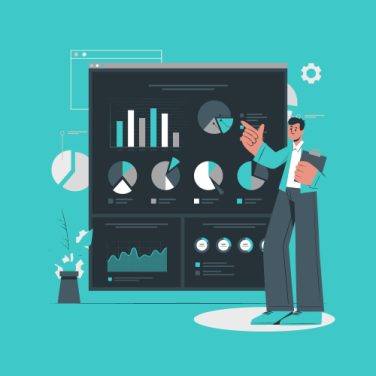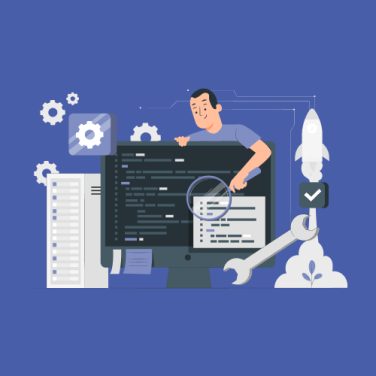Workforce management solutions unite scheduling, attendance, and performance metrics in one platform. These tools replace manual timesheets and scattered spreadsheets, addressing compliance risk and data silos.
By integrating time attendance software with payroll engines and performance dashboards, organisations gain a single source of truth. Mobile-first capabilities let employees clock in from smartphones, while AI-driven insights forecast staffing needs and reduce absenteeism.
From paper timesheets to intelligent platforms
Today’s enterprise demands seamless tracking across on-site, remote, and field teams. Modern workforce management solutions deliver automated shift scheduling, real-time analytics, and self-service portals. This unified approach streamlines operations, lowers labour costs, and empowers HR to make data-driven decisions.
Implementing these workforce management solutions reduces manual errors, improves compliance with labour laws, and boosts productivity. Organisations leveraging advanced employee performance tracking software alongside time tracking tools report higher retention and engagement rates.
From small teams to global enterprises, a unified HR ecosystem transforms operations from reactive to proactive.
Key features of modern time attendance software

Modern time attendance software offers reliable data capture and scheduling automation. Core features include biometric and mobile clock-in/out, geofencing, real-time dashboards, and compliance modules. These capabilities reduce manual timesheet errors, enforce labour law adherence, and streamline shift management for on-site and field teams.
Biometric and mobile clock-in: Biometric scanners and mobile apps capture employee attendance with precision. Facial recognition, fingerprint readers, and secure mobile IDs prevent buddy punching. Geofencing and GPS verification ensure remote workers clock in only within authorised areas. Coupled with the Attendance and Time Management module of MiHCM Enterprise, organisations gain 24/7 visibility into workforce movements.
Self-service portals and approvals: Employee Self-Service enables staff to request time off, view schedules, and access attendance records. Automated approval workflows notify managers of shift-change requests and exceptions. This transparency empowers employees and reduces administrative overhead. MiA self-service apps provide intuitive interfaces that boost adoption and accuracy.
Real-time dashboards alert supervisors to late arrivals, overtime, and absenteeism. Automated shift scheduling balances workloads and flags compliance risks. Audit trails document every punch, enabling labour law modules to enforce breaks and overtime thresholds.
| Feature | Description | Benefit |
|---|---|---|
| Biometric Clock-In | Fingerprint and facial recognition | Eliminates buddy punching |
| Mobile Attendance Tracking | GPS and geofencing support | Validates off-site work |
| Self-Service | Time-off requests & schedule view | Reduces administrative load |
Compliance modules track statutory working hours, breaks, and overtime limits, generating audit reports for labour inspections. Custom alerts can flag anomalies such as repeated tardiness or excessive overtime.
Integration with payroll modules enables automated overtime calculations and pay rules enforcement. Organisations report up to 30% reduction in payroll reconciliation errors after deploying advanced time attendance software.
With intuitive mobile apps, employees instantly receive schedule updates and shift swap approvals, further reducing administrative tasks for HR teams.
Adopting mobile-first time attendance software accelerates compliance, minimises manual reconciliation, and improves employee satisfaction by offering transparency and control.
Time Tracking Software – Beyond the Clock: Time tracking software extends beyond simple clock-in and clock-out functions, capturing task-level efforts and linking them to projects, clients, and cost centres. Unlike time attendance software that records presence, project-based time tracking records activities in real time, enhancing billing accuracy and resource allocation. Integration with project management systems and billing engines automates timesheet submission, approval, and invoicing.
Project-based time tracking: By assigning task codes and client project IDs, organisations obtain granular insights into labour costs and utilisation. Automated workflows route timesheets to managers for quick approval, while API connectors push approved entries into accounting systems. This seamless data flow ensures timely client billing and cost control.
- Task-Level Reporting: Monitor hours by task, role, or cost centre to identify efficiency gaps and optimise resource allocation.
- Billing Integration: Link tracked time to invoicing platforms, reducing billing cycle times and improving cash flow.
- Customisable Codes: Define project codes, departments, and client identifiers for tailored reporting.
- Approval Workflows: Configure multi-step timesheet approvals to enforce compliance and audit requirements.
- Visibility Dashboards: Real-time charts highlight who is working on which task, overdue entries, and budget overruns.
Modern workforce management solutions merge employee performance tracking software with time tracking software, offering an integrated view of productivity metrics and time utilisation. Data-driven HR decisions leverage these insights to improve project forecasting, control labor costs, and enhance profitability.
Flexible deployment options support on-premises, cloud, or hybrid environments, making it easier for organisations of all sizes to adopt advanced time tracking capabilities without disrupting existing workflows.
Organisations leveraging MiHCM Lite for small teams can start tracking projects quickly, while MiHCM Enterprise scales to complex scheduling and global payroll. Adding MiHCM Data & AI and Analytics modules provides predictive insights into project profitability and resource bottlenecks. SmartAssist automates time approval reminders, accelerating billing cycles and minimising approval delays.
Comprehensive audit trails ensure time entries are tamper-proof, supporting internal audits and client compliance requirements.
Leveraging employee performance tracking software

Employee performance tracking software measures productivity, quality, and competencies across roles. By defining clear metrics and KPIs, organisations gain visibility into individual and team achievements.
Continuous feedback loops and pulse surveys foster engagement, while real-time dashboards display progress against goals. Identifying top performers and at-risk employees early enables targeted development plans and retention strategies.
Integrating performance data with workforce demographics insights reveals trends that drive effective talent management.
Building a culture of ongoing feedback
Pulse surveys and in-app check-ins ensure feedback remains timely and relevant. Managers can comment on milestones, request self-evaluations, and recognise achievements instantly. Automated reminders prompt regular one-on-one check-ins, strengthening communication and accountability.
Goal-setting modules let employees and managers co-create objectives, align them with department targets, and review progress via interactive KPI dashboards. Customisable scorecards combine quantitative metrics—such as units produced, sales closed, or tasks completed—with qualitative assessments like peer reviews and competencies achieved.
Advanced workforce management solutions analyse performance patterns, predicting attrition risk by clustering engagement scores and absence trends. Analytics modules surface cohorts needing coaching or high-potential employees ready for succession planning. Linking performance tracking software to learning management systems automates development pathway recommendations, reinforcing retention.
By consolidating attendance, time tracking software, and performance metrics in one HR ecosystem, organisations reduce data fragmentation and gain actionable insights. Employee performance tracking software integrated with payroll and scheduling ensures recognition and rewards align with actual contributions, driving productivity and morale.
Integrating workforce management with HR and payroll
Integrating workforce management solutions with HR and payroll systems creates a single source of truth for employee data.
Real-time attendance feeds deliver accurate hours directly into payroll engines, automating pay calculations and statutory deductions.
Compliance modules enforce labour laws across jurisdictions, reducing manual interventions and audit risk.
Unified data model for HR and payroll
- Centralised Employee Records: One profile stores personal data, attendance history, performance, and pay rules.
- Real-Time Data Sync: Instant updates eliminate batch exports and reduce reconciliation errors.
- Compliance Automation: Built-in rules for overtime, breaks, and tax calculations adjust pay runs automatically.
- API and Native Connectors: Secure REST APIs and pre-built connectors ensure seamless integration with ERP and accounting platforms.
- Middleware Options: Support for message brokers and integration platforms delivers scalable data flows.
When attendance data feeds automatically into payroll, organisations can close payroll cycles in minutes instead of days. Automated statutory compliance across multiple regions mitigates the risk of fines and penalties. By leveraging MiHCM Enterprise’s integrated payroll engine, HR teams avoid manual reconciliation and maintain audit-ready records.
Best practices for integration include defining clear data mappings, using middleware for legacy systems, and validating data sync processes during pilot phases. Native connectors for popular HRIS and ERP solutions speed deployment, while flexible APIs allow custom extensions.
Unified workforce management reduces data silos, enhances reporting accuracy, and empowers organisations to make data-driven HR decisions. With a consolidated platform, stakeholders—from HR to finance—access consistent information, improving collaboration and strategic planning.
Implementing a unified data model supports workforce demographics insights, allowing HR to segment pay analytics by department, location, or role. This level of granularity drives targeted budget allocation and forecast accuracy.
Choosing the right workforce management solution for your business
Assessing business requirements—such as remote vs. on-site workforce, global presence, and team scale—guides product selection. Cloud, on-premises, or hybrid options cater to security and IT policies.
Modular architectures let organisations start with core attendance modules and expand to analytics and AI over time. Vendor evaluation should consider support SLAs, customisation flexibility, product roadmap, and active user communities. Calculating potential ROI includes reduced payroll errors, labour cost savings, and compliance penalty avoidance.
For mid-sized companies with remote teams, cloud-based workforce management solutions simplify IT overhead and accelerate updates. Hybrid deployments suit enterprises requiring local data control for compliance while leveraging cloud analytics. On-premises installations may serve highly regulated industries preferring complete data ownership.
Startups and small teams benefit from MiHCM Lite’s rapid implementation and intuitive mobile apps, while large enterprises scale with MiHCM Enterprise’s advanced scheduling, global payroll, and integrated AI analytics. Organisations can incrementally add Employee Self-Service, Analytics, and SmartAssist modules as needs evolve.
Every evaluation should include stakeholder input from HR, finance, and operations to ensure a balanced feature set that meets organisational objectives. Continuous vendor feedback monitoring aids long-term success.
Future trends: AI and predictive analytics in workforce management
Artificial intelligence and predictive analytics are reshaping workforce management solutions. AI-driven forecasting analyses historical attendance, seasonal trends, and business drivers to recommend optimal staffing levels.
Predictive absenteeism models flag potential no-shows before they occur, while turnover risk scores help retain top talent. Conversational AI from SmartAssist handles routine HR inquiries, freeing teams to focus on strategic tasks.
By leveraging machine learning, predictive scheduling aligns labour supply with forecasted demand. Predictive analytics incorporate factors such as weather, sales promotions, and local events to recommend shift patterns, minimising overstaffing and understaffing. Workforce management solutions like MiHCM Data & AI use clustering algorithms to group employees by performance and leave behaviours, enabling proactive interventions.
Conversational AI chatbots automate leave approvals, shift swaps, and policy clarifications. Natural language processing understands employee queries, referencing attendance records and labour rules. This digital assistant reduces HR response times and improves user experience.
Predictive workforce solutions surface insights into overtime burn rates, skill gaps, and capacity constraints. Managers receive AI-generated alerts when teams approach overtime thresholds or when critical roles show rising absence trends. Embedding employee performance tracking software with predictive modules creates a unified HR ecosystem that drives data-driven decisions.
Adopting AI and predictive analytics in workforce management empowers organisations to build agile, future-ready workforces. Advanced analytics modules integrate seamlessly with mobile attendance tracking, delivering proactive scheduling recommendations directly to employee apps. This combination of mobile-first design and AI intelligence sets the stage for operational excellence and strategic workforce planning.
These future trends signal a shift from reactive management to predictive, strategic workforce planning.
Key takeaways and next steps
Unified workforce management solutions streamline attendance tracking, time management, and performance metrics into a single platform, improving accuracy and compliance while boosting productivity.
Incorporating time attendance software, time tracking software, and employee performance tracking software under one HR ecosystem eliminates data silos and accelerates decision-making.
Modern platforms deliver mobile-first clock-in/out, biometric verification, and self-service portals, paired with AI-driven forecasting and predictive analytics. Integrating attendance data seamlessly with payroll modules cuts manual reconciliation and ensures labour law compliance across jurisdictions.
To get started, audit existing processes to identify pain points and data gaps. Pilot a modern workforce management solution—such as MiHCM Lite or MiHCM Enterprise—with select teams, and track key metrics like error reduction, payroll cycle time, and employee engagement. Analyse results and expand modules—Analytics, SmartAssist, MiHCM Data & AI—to scale predictive capabilities and automate HR workflows.
Embracing a mobile-first, AI-powered approach ensures your workforce stays agile, engaged, and compliant.



